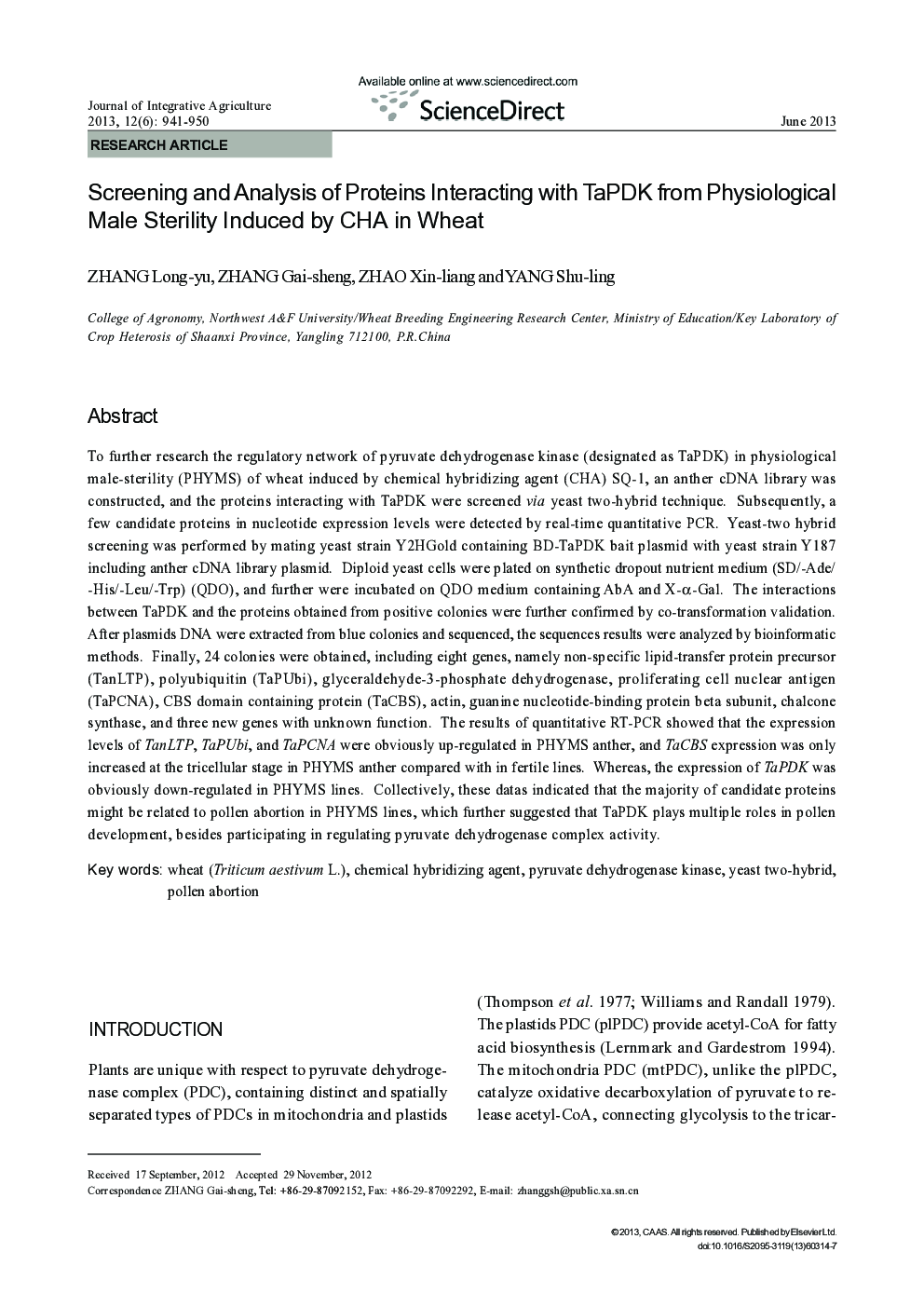| Article ID | Journal | Published Year | Pages | File Type |
|---|---|---|---|---|
| 4495047 | Journal of Integrative Agriculture | 2013 | 10 Pages |
To further research the regulatory network of pyruvate dehydrogenase kinase (designated as TaPDK) in physiological male-sterility (PHYMS) of wheat induced by chemical hybridizing agent (CHA) SQ-1, an anther cDNA library was constructed, and the proteins interacting with TaPDK were screened via yeast two-hybrid technique. Subsequently, a few candidate proteins in nucleotide expression levels were detected by real-time quantitative PCR. Yeast-two hybrid screening was performed by mating yeast strain Y2HGold containing BD-TaPDK bait plasmid with yeast strain Y187 including anther cDNA library plasmid. Diploid yeast cells were plated on synthetic dropout nutrient medium (SD/-Ade/-His/-Leu/-Trp) (QDO), and further were incubated on QDO medium containing AbA and X-α-Gal. The interactions between TaPDK and the proteins obtained from positive colonies were further confirmed by co-transformation validation. After plasmids DNA were extracted from blue colonies and sequenced, the sequences results were analyzed by bioinformatic methods. Finally, 24 colonies were obtained, including eight genes, namely non-specific lipid-transfer protein precursor (TanLTP), polyubiquitin (TaPUbi), glyceraldehyde-3-phosphate dehydrogenase, proliferating cell nuclear antigen (TaPCNA), CBS domain containing protein (TaCBS), actin, guanine nucleotide-binding protein beta subunit, chalcone synthase, and three new genes with unknown function. The results of quantitative RT-PCR showed that the expression levels of TanLTP, TaPUbi, and TaPCNA were obviously up-regulated in PHYMS anther, and TaCBS expression was only increased at the tricellular stage in PHYMS anther compared with in fertile lines. Whereas, the expression of TaPDK was obviously down-regulated in PHYMS lines. Collectively, these datas indicated that the majority of candidate proteins might be related to pollen abortion in PHYMS lines, which further suggested that TaPDK plays multiple roles in pollen development, besides participating in regulating pyruvate dehydrogenase complex activity.
